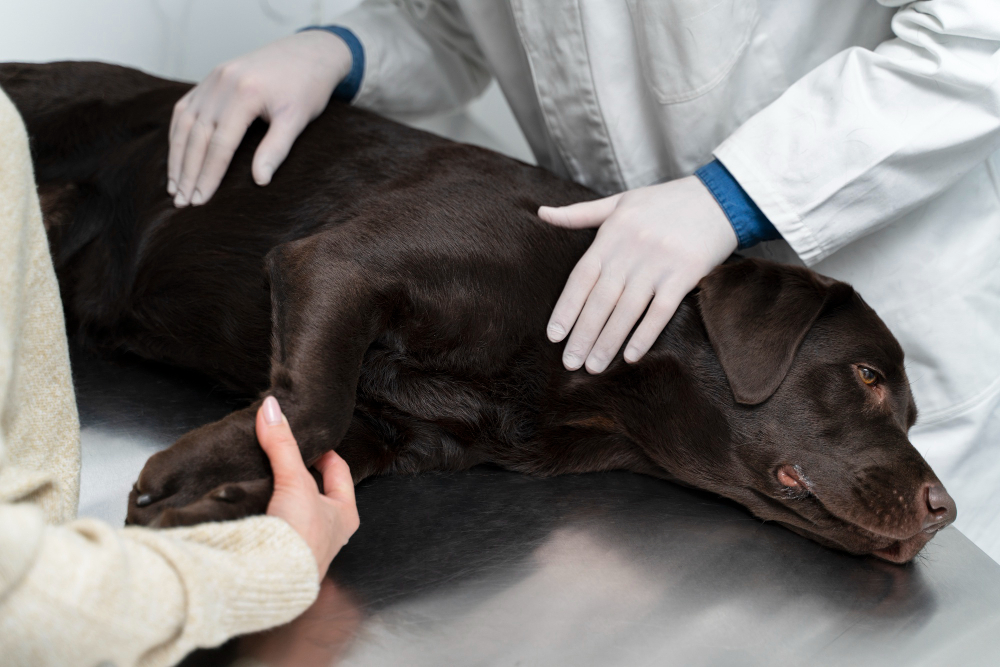Joint diseases in dogs can significantly impact their daily routines and overall well-being, leading to severe discomfort and mobility issues. As such, it’s crucial to adopt measures that can enhance their quality of life. While there’s no foolproof way to prevent these conditions, advancements in technology have made it possible to diagnose and treat them more effectively.
The Spectrum of Canine Joint Diseases
Joint diseases in dogs are diverse, ranging from acute to chronic conditions. These diseases primarily affect the joints, leading to cartilage wear and changes in bone ends, bursae, tendons, ligaments, and the synovial membrane responsible for joint lubrication. The result is a significant decrease in the animal’s quality of life.
The joint, a union of two or more bones, serves to support weight, provide stability, and aid in locomotion. As dogs age, they become more susceptible to degenerative joint diseases. The conditions that most commonly affect dogs, with effects varying from short to long-term, include arthritis, osteoarthritis, osteochondrosis, tendinitis, degenerative articular disease, tenosynovitis, aseptic necrosis of the femur head, and hip dysplasia, among others.
Certain diseases also have a propensity for specific breeds, each with different symptoms and causes. For more detailed information on this, refer to the article on dog breeds with the highest genetic predisposition to joint and hip diseases.
Causes of Canine Joint and Hip Conditions
The causes of these conditions are varied and depend on the specific disease. Common causes include trauma, fractures, hereditary and genetic predisposition, previous illnesses, overweight, inadequate diet, physical inactivity, improper posture, repetitive movements, stress, wear due to natural aging, joint dislocation or subluxation, angular deformity, and conformation defects.
Recognizing the Signs of Joint Disease in Dogs
Signs of joint disease in dogs include difficulty walking or finding a comfortable position to sleep, discomfort or difficulty in lowering themselves to drink water or eat, limping, acute or chronic pain, reddening of the skin around the inflammation, fatigue, temperature increase, increased joint volume (swelling), limitation of range of motion, and changes in behavior.
Diagnosing Joint Diseases in Dogs
To diagnose joint diseases in dogs, veterinarians employ a variety of techniques. These methods are typically associated with clinical signs and symptoms and the results of synovial fluid analysis. A complete anamnesis, which includes information about the dog’s breed, age, sex, habits, habitat, previous diseases and treatments, weight, volume increase, and tremors, should be the first step in the diagnosis process.
Following the initial evaluation, more in-depth examinations are conducted through imaging diagnoses. Radiology is a non-invasive, inexpensive, and highly recommended method for evaluating the locomotor system. However, it has ionizing effects and is ineffective on soft tissues. Doctors can also use magnetic resonance imaging or tomography, which are very efficient but have a high cost and require the animal to be under general anesthesia. Ultrasonography is an extremely efficient tool that provides high-resolution information on the joint structures of dogs. It is accessible, low-cost, allows evaluation of soft tissue structure, and is neither ionizing nor invasive.
Treating Joint Diseases in Dogs
While there is a treatment for every joint problem, some conditions may not have a cure. In such cases, supportive treatment can significantly improve the dog’s quality of life and well-being. The veterinarian may recommend complementary therapies such as physiotherapy, acupuncture, and hydro gymnastics to assist in the treatment and recovery of the animal. Specific medications are also essential and must be prescribed by a veterinarian.
To keep your pet comfortable, consider the following tips:
- Maintain a Warm Environment: Joints tend to be more strained when cold.
- Avoid Jumping and Strenuous Physical Activity: Be mindful of where your pet exercises. Avoid uneven and slippery floors and sudden movements when playing, such as jumping.
- Monitor Weight: Overweight and obese animals suffer from inflammatory processes in the body, in addition to overloading the joints of the knees and elbows.
- Administer Supportive Medications: Especially in the case of elderly pets, applying supportive medications, such as supplements, can delay the onset of joint problems.
- Ensure a Safe Home Environment: Pay attention to the floor. If it is slippery, use mats or rubberized floors to improve the friction of the paws. In the case of animals that usually go up and down stairs or furniture, ensure they make these movements safely.
- Schedule Regular Veterinary Check-ups: Taking pets periodically to the vet helps prevent many diseases, and early diagnosis can avoid suffering and future complications.
By following these tips, it will be easier to notice if your dog has joint problems, allowing you and the vet to do everything possible to keep your buddy as comfortable as possible.
Conclusion: Prioritizing Canine Joint Health
In conclusion, joint diseases in dogs are a prevalent issue that can significantly impact their quality of life. These conditions, while varied in nature, share common symptoms that can be identified with careful observation and regular veterinary check-ups. While some breeds may be genetically predisposed to certain joint diseases, it’s important to remember that these conditions can affect any dog, regardless of breed or age.
The advancements in diagnostic techniques and treatment options have made it possible to manage these diseases more effectively than ever before. From imaging diagnoses to supportive treatments and complementary therapies, there are numerous ways to alleviate the discomfort and mobility issues associated with joint diseases.
As a pet owner, your role in maintaining your dog’s joint health is crucial. By providing a safe and warm environment, monitoring their weight, ensuring they get appropriate exercise, and scheduling regular veterinary check-ups, you can significantly contribute to their well-being.
Remember, while joint diseases can be challenging to deal with, they don’t define your pet’s life. With the right care and attention, your furry friend can lead a comfortable and fulfilling life, despite their joint issues. After all, our canine companions deserve nothing less than the best we can provide.

